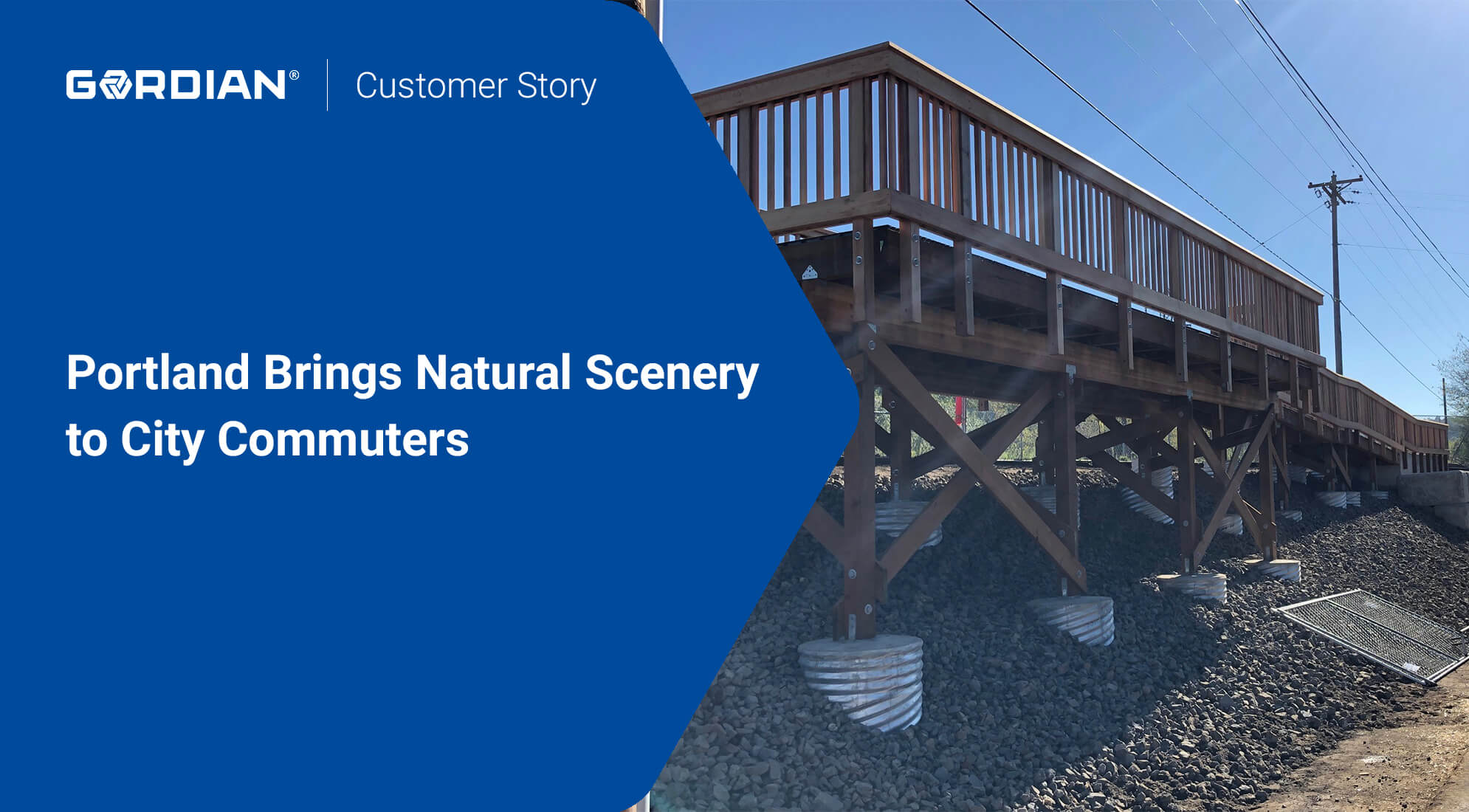A successful Job Order Contracting (JOC) construction project follows a proven process that Gordian has been perfecting for over 30 years. One of the most important steps in that process is the Joint Scope Meeting. Generally speaking, this meeting gets everyone on the same page regarding the construction project. In concrete terms, a successful Joint Scope Meeting will diminish ambiguity in the Detailed Scope of Work, which in turn will create fewer change orders.
The Gist
- A Joint Scope Meeting brings together key stakeholders to walk a job site before a Job Order Contracting project begins.
- The Joint Scope Meeting is an opportunity to clarify the Detailed Scope of Work, answer questions related to the project and find opportunities for Value Engineering.
- It is possible, if need be, to hold virtual or socially-distanced Joint Scope Meetings.
Conducting a solid Joint Scope Meeting is akin to a long kickoff return in a football game: It builds momentum and puts the team in the best position to succeed. And like long kickoff returns that bring the (safely distanced) hometown crowd roaring to its feet, successful Joint Scope Meetings are the product of careful preparation and decisive improvisation. With over three decades of experience implementing Job Order Contracting programs and overseeing Job Order Contracting projects, Gordian knows all the keys to a successful Joint Scope Meeting and we’re happy to share them with you. Let’s start by answering an obvious question.
What is a Joint Scope Meeting?
The Joint Scope Meeting is unique to the Job Order Contracting process, and it is usually the first event scheduled once a project is identified. A Joint Scope Meeting is a gathering of various project stakeholders to walk the job site and develop a Detailed Scope of Work (which the contractor will use to develop a Price Proposal) in a collaborative and constructive atmosphere.
Owners have the opportunity to explain any special circumstances and seek input from contractors, sub-contractors, architects, engineers — whoever might provide useful input. Contractors get to raise their concerns and ask questions of the owners on-site and before work begins. The Joint Scope Meeting is an ideal time to set expectations for practical aspects of construction like hours of operation and the arrival and staging of construction equipment. This is the entire team’s chance to develop a game plan before work begins, and when a Joint Scope Meeting is thorough and collaborative, everyone wins.
7 Tips for a Successful Joint Scope Meeting
1. Prepare Like a Champion
It has been said that success is where preparation and opportunity meet. This phrase has inspired countless athletes, and it has application to Joint Scope Meetings as well. To properly prep, project owners should provide as much documentation as they can before the meeting. Having a scope drafted and/or preparing drawings and facility layouts gives the contractors a preliminary understanding of what they’re walking into and a better understanding of what types of subs to bring to the meeting. And the more owners and contractors are prepared, the more likely it is your Joint Scope Meeting will be a success.
2. Walk the Job Site as a Group
It’s very easy for the people at a Joint Scope Meeting to disperse through the job site to check the areas where their expertise is most useful. Carpenters naturally inspect the drywall; electricians can’t help but imagine wiring and plumbers are drawn to pipes. That’s just the way of things. But it’s a best practice for the group to stay together.
Here’s why: It keeps everyone on the same page. By walking the job site as a group, facility owners and contractors can hear what the specialists think and ask them questions for clarification. The upside to this collaboration is contractors are alerted to potential problems and can devise solutions before work begins, thus avoiding cost overruns and rework. The downside, if you could call it that, is you might look like a tourist group.
Watch the video below to see how the University of North Texas kept their Gordian Job Order Contracting project progressing after a Joint Scope Meeting turned up several unexpected conditions.
3. Ask Questions
The contractors, subcontractors and other stakeholders invited to the Joint Scope Meeting have plenty of expertise to offer, but they won’t know you have a question if you don’t ask it. Asking questions and seeking the help of the project team can lead to Value Engineering opportunities and significant financial savings.
For example, when Duluth Public Schools in Minnesota needed to relocate students, faculty and staff to a new space over winter break, Gordian and the district’s awarded contractor used the Joint Scope Meeting to identify opportunities to make the most of the project’s budget. The collaborative team reused existing water fountains, retrofit light fixtures and took other measures to save money. The project owner asked a question as simple as “How can we save money?” and the contractor responded by completing the project well within budget.
4. Encourage Contractors to Take Pictures and Draw Sketches
Recalling every nuanced inch, every nook and cranny of your facility from memory would be a nearly impossible task — and you’re there every day. You can’t expect contractors and subs to remember everything about your facility after one walk around the site. Encourage them to take pictures or draw sketches of the facility during the Joint Scope Meeting to help jog their memories when they sit down to write the project Price Proposal.
5. Perform Quantity Takeoffs
No Joint Scope Meeting is complete without performing quantity takeoffs — the measurements to properly bid a project. Work with the contractor to determine the number of materials needed and other crucial calculations while everyone is on the job site. Doing so will help the team reach a broad consensus about the work to be done and ensure the contractor’s Price Proposal is accurate.
6. Review the Detailed Scope of Work
Discuss the finer points of the project at the end of the meeting to ensure the entire team has a clear understanding of the entire Detailed Scope of Work. This could result in more questions, more ideas and more conversation. And that’s a good thing. You want to finish your Joint Scope Meeting with a game plan, a comprehensive Detailed Scope of Work that leaves no room for interpretation.
7. Establish Timelines
It’s important to determine when the contractor will deliver the final Price Proposal. Working hours should also be discussed, so the contractor can apply the proper adjustment factor. This is also a great time to nail down a rough construction schedule. Finally, inform the contractor if you are funding the work with grants or bonds with specific deadlines that impact the project timeline.
Want to know more about Gordian’s Job Order Contracting? Listen to Dan Cook, Vice President and General Manager for SLED, on Procurated’s “Decisions That Matter” podcast.
Joint Scope Meetings and the Coronavirus
Joint Scope Meetings have gone down in some interesting places. Prestigious universities, public schools in exotic locales and a historic public library to name a few. Social distancing guidelines put in place in response to the COVID-19 pandemic have resulted in another unusual place for a Joint Scope Meeting: the home office.
Video conferencing technologies such as Zoom, Skype and FaceTime have made it possible, when necessary, to hold virtual Joint Scope Meetings. Though it might produce some awkward camera angles and one might have to fight for a Wi-Fi signal, a virtual Joint Scope Meeting is a great way to prevent the spread of the coronavirus. If a virtual meeting is not possible, follow social distancing guidelines and wear masks and other personal protective equipment (PPE) to keep the team safe.
The Joint Scope Meeting: Start Successful, End Successful
Following these seven tips will help you run a comprehensive, communicative Joint Scope Meeting. Stick to them and you’ll almost always end up with accurate, reliable Price Proposals and have a greater chance of your Job Order Contracting construction project going smoothly.





